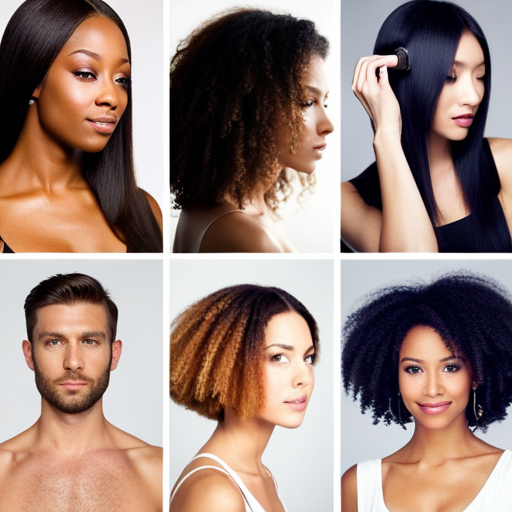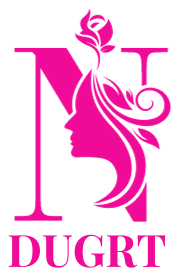Brushing and Combing Techniques for Different Hair Types

Understanding the unique needs of different hair types is essential for maintaining healthy and beautiful locks. From straight and fine hair to curly and coiled textures, each requires specific brushing and combing techniques to minimize damage and maximize styling potential.
In this article, we will explore the best practices for managing a variety of hair types, offering valuable insights and tips for achieving optimal results in hair care and styling.
Understanding Straight and Fine Hair
Understanding the characteristics and needs of straight and fine hair is essential for selecting the most suitable brushing and combing techniques. Straight hair tends to be smooth and sleek, often lacking volume and body. Care for straight hair involves using lightweight, volumizing products to add texture and lift. When it comes to styling fine hair, it’s crucial to avoid heavy or oily products that can weigh the hair down. Instead, opt for products designed to add volume and thickness without leaving residue.
For straight and fine hair, brushing and combing techniques should be gentle to prevent breakage. A wide-tooth comb or a brush with soft, flexible bristles works well to detangle without causing damage. When using a hairbrush, look for designs specifically intended for fine hair to avoid unnecessary breakage.
Transitioning into the subsequent section about ‘navigating wavy and thick hair’, it’s important to note that while straight and fine hair requires lightweight products and gentle detangling, wavy and thick hair demand different care and attention.
Navigating Wavy and Thick Hair
Wavy and thick hair have unique characteristics that require specific brushing and combing techniques to maintain their health and manageability.
When caring for wavy hair, it’s important to use a wide-tooth comb or a detangling brush to gently work through knots and avoid disrupting the natural wave pattern.
Utilize a leave-in conditioner to enhance the natural texture and minimize frizz, providing moisture and definition to the waves.
Consider air-drying or using a diffuser when styling wavy hair to maintain its natural bounce and movement, avoiding excess heat that can lead to frizz and damage.
Thick hair styling requires a different approach, necessitating the use of a paddle brush or a boar bristle brush to effectively distribute natural oils from the scalp to the ends, promoting overall hair health.
Applying a lightweight, volumizing mousse or foam can help add structure and lift to thick hair, making it more manageable and easier to style.
Opt for hair elastics and accessories that provide a secure hold without causing breakage or discomfort.
Transitioning into the subsequent section about ‘mastering curly and coiled hair’, it’s essential to understand the specific needs and techniques for maintaining the health and beauty of these unique hair types.
Mastering Curly and Coiled Hair
Transitioning from the unique needs of wavy and thick hair, mastering curly and coiled hair requires specific techniques to maintain its health and enhance its natural beauty. When dealing with curly and coiled hair, understanding the different curl patterns is essential.
These patterns range from loose curls to tightly coiled strands, and each requires tailored care. For loose curls, a wide-tooth comb or a detangling brush can be used to gently detangle the hair while it is damp and conditioned. For tighter coils, using fingers or a narrow-tooth comb is more effective in preventing breakage and maintaining the natural coil pattern.
It’s crucial to avoid brushing curly and coiled hair when it’s dry, as this can lead to frizz and damage. Instead, apply a leave-in conditioner or a detangling spray to aid in the detangling process.
Additionally, incorporating a deep conditioning treatment into the hair care routine can help in managing and defining the natural curl patterns, resulting in healthier and more lustrous curls.
Taming Frizzy and Unruly Hair
Dealing with frizzy and unruly hair requires implementing effective techniques for managing its texture and appearance. Frizz control is a common concern for individuals with this hair type, but with the right approach, it can be effectively managed. Here are some essential styling tips to tame frizzy and unruly hair:
-
Hydration: Using a hydrating shampoo and conditioner can help to moisturize and nourish frizzy hair, reducing its unruly appearance. Look for products containing ingredients like argan oil, shea butter, or coconut oil to provide deep hydration. Consider incorporating a weekly hydrating hair mask to further nourish and tame frizz.
-
Avoiding Heat Damage: Excessive heat styling can exacerbate frizz, so consider air-drying your hair whenever possible to minimize heat damage. When heat styling is necessary, use a heat protectant spray to shield your hair from damage.
-
Regular Trimming: Getting regular trims can help manage frizz by preventing split ends and maintaining the overall health of the hair. Aim to schedule a trim every 6-8 weeks to keep frizz and unruliness in check.
Managing Mixed Hair Textures
Managing mixed hair textures requires an understanding of blending textures and utilizing appropriate styling options. When dealing with mixed textures, it’s essential to use products that cater to each specific texture. For example, a combination of wavy and curly textures may require different styling products for each section to enhance and define the natural pattern of the hair.
Additionally, utilizing techniques such as twist-outs or braid-outs can help blend different textures seamlessly, providing a uniform and polished appearance. Stylists should also consider tailored haircut techniques that complement various textures, such as layering to create dimension and balance.
Furthermore, embracing versatile hairstyles that work with the different textures, such as buns, braids, or twist styles, can provide a cohesive and elegant look. By understanding the unique needs of each texture and employing suitable styling options, stylists can effectively manage mixed hair textures to achieve a harmonious and sophisticated result.
Frequently Asked Questions
How Often Should I Replace My Hairbrush or Comb?
Proper maintenance of hairbrushes and combs is essential for hygiene and hair health. Signs of wear, such as broken or missing bristles, indicate the need for replacement. Generally, it’s recommended to replace these tools every 6-12 months.
Are There Any Specific Techniques for Detangling Hair Without Causing Breakage?
In the realm of hair care, breakage prevention is paramount. Natural remedies and detangling methods play a crucial role. Implementing gentle techniques, such as starting from the ends and working upwards, can effectively minimize breakage.
What Are Some Tips for Maintaining Healthy Hair While Using Heat Styling Tools?
To maintain healthy hair while using heat styling tools, it’s crucial to prioritize heat protection and hair care. Incorporating styling tips that minimize heat exposure and regularly conditioning the hair can contribute to overall hair health.
Can You Recommend Any Specific Products or Ingredients to Help Manage Frizz and Flyaways?
To manage frizz and flyaways, consider using natural remedies like DIY hair masks with ingredients such as coconut oil or avocado. Additionally, scalp massages with essential oils like argan or jojoba can help nourish and control frizz.
Are There Any Brushing or Combing Techniques That Can Help Promote Hair Growth and Minimize Shedding?
To promote hair growth and minimize shedding, incorporating scalp massage and stimulation can enhance blood circulation, encouraging hair follicle health. Additionally, natural oils and supplements rich in nutrients like biotin and omega-3 can support overall hair health.
Conclusion
In conclusion, mastering the art of brushing and combing techniques for different hair types requires patience, understanding, and the right tools.
By learning to navigate the unique characteristics of straight, fine, wavy, thick, curly, coiled, frizzy, unruly, and mixed hair textures, you can achieve the desired look and maintain the health of your hair.
With the right knowledge and skills, you can confidently embrace and care for your hair, feeling empowered and beautiful.





